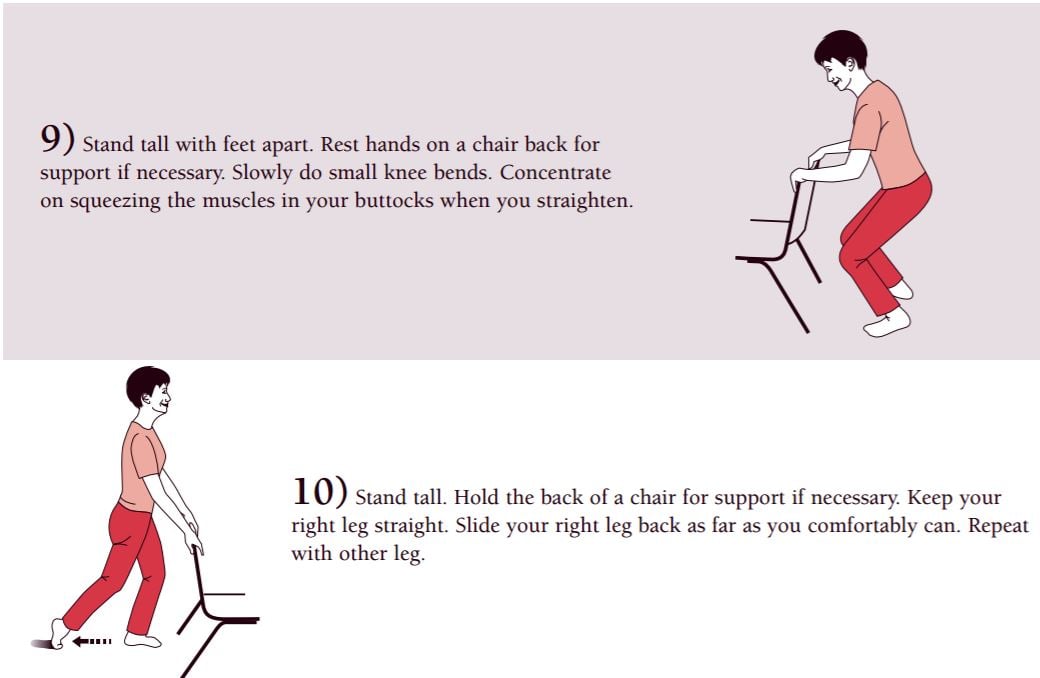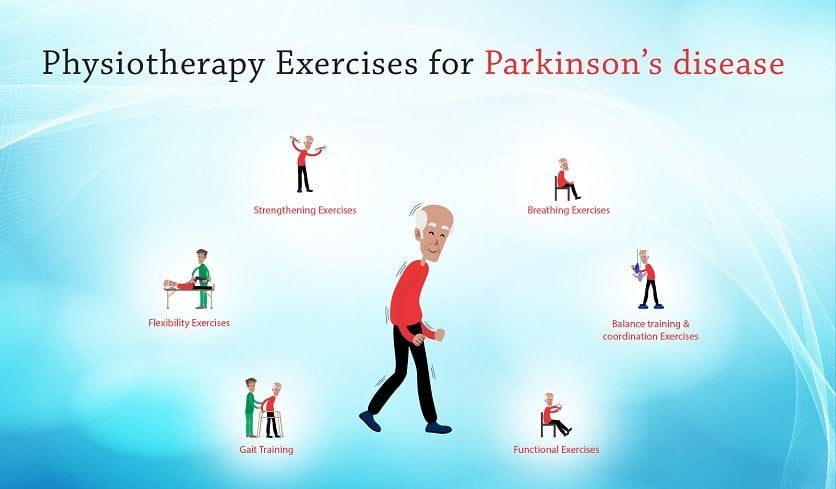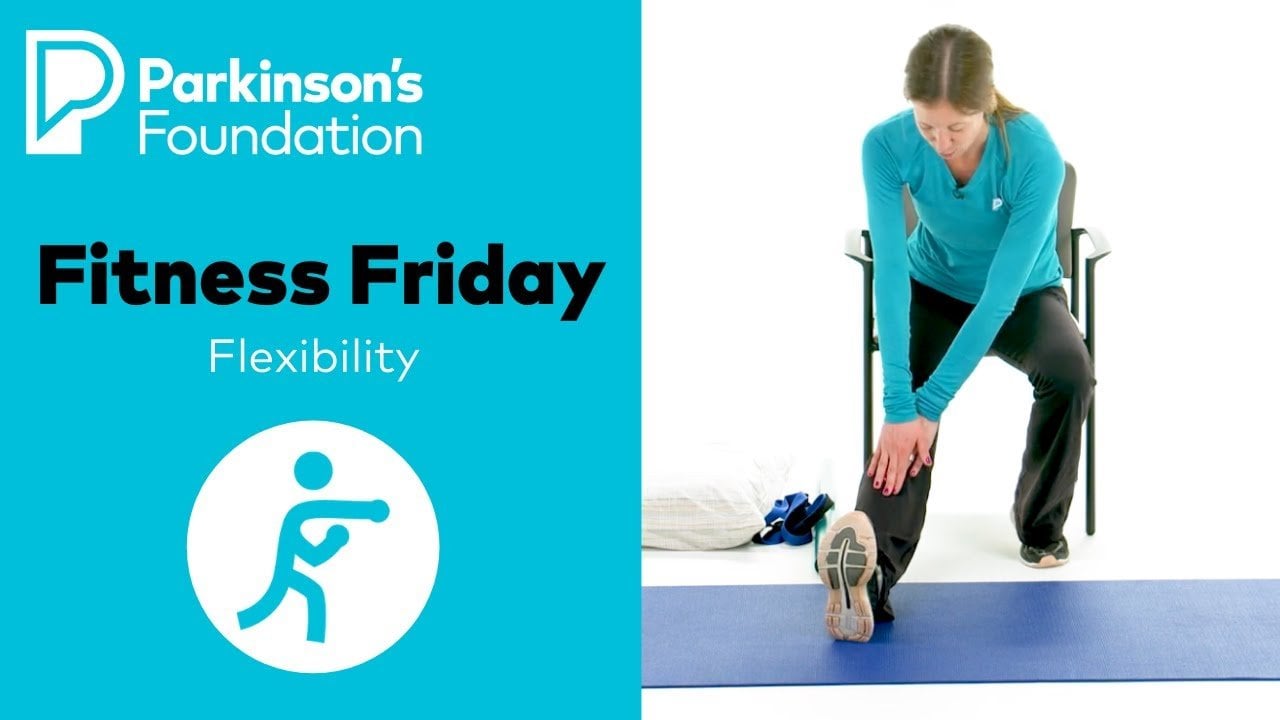Parkinson Society British Columbia Exercise Recordings
Cost: Free
Purchase Info:
Cost: Free
Features thirteen men and women with PD of different ages demonstrating both standard and advanced workout routines with twice-weekly variations. Intro reviews benefits of exercise and keys to success. Exercises were developed by physical therapist expert.
Cost: Free
Archived classes from March 2020 to the present include yoga, shadow boxing, multi-tasking/cognition, strength and coordination cardio, bigger and stronger.
Cost: Free
Four of the videos posted to the PASF YouTube channel are exercise videos. Each is 25 minutes long. Focus of the videos include strength and mobility, balance skills, seated and mat exercises.
What Type Of Exercise Should I Do If I Have Parkinson’s Disease
Exercise is a planned, structured, repetitive activity that is intended to improve physical fitness. There is no right exercise for people with Parkinsons. Everyones regimen will differ, depending on overall health, symptoms and previous level of activity. Any exercise helps, and a variety of exercise types may provide well-rounded benefits.
Aerobic exercise
Aerobic exercise involves activities that challenge your cardiorespiratory system such as walking, biking, running, and activities in the pool. Participating in aerobic exercise at least three days a week for 30-40 minutes may slow Parkinsons decline.
Strength training
Strength training involves using your body weight or other tools to build muscle mass and strength. Strength training two days per week, starting with low repetition and weight, may be beneficial in Parkinsons disease. A focus on extensor muscles, or muscles in the back of the body, can help with posture.
Flexibility training
Stretching two or more days per week can be beneficial to maintain range of motion and posture. Holding each stretch of major muscle groups for 30 to 60 seconds can improve muscle length.
Balance and agility training
This type of training often combines aerobic exercise, strength training, and flexibility training. Examples include:
- Dancing.
- Tai chi, yoga or Pilates.
What Kind Of Exercise Can I Do If I Have Trouble Standing Or Walking
Even with advanced Parkinsons symptoms, you can still reap the benefits of some activities. If you have trouble walking or balancing, hold a bar or rail to exercise and stretch. If standing or getting up is tough, exercise and stretch in a chair or bed. Physical exercise performed in a seated position, such as biking on a recumbent bike can allow you to exert yourself in a safe manner.
Facial exercises may help combat difficulties speaking or swallowing:
- Chew your food longer and more vigorously.
- Exaggerate your face and lip movements when you speak.
- Make faces in the mirror.
- Sing or read out loud.
Mental exercises give your brain a workout and can improve memory. For example:
- Name as many animals as you can in 1 minute.
- Play brain games and do puzzles.
- Solve math problems in your head.
You can also add activity in small bits throughout your day:
- Park further away from stores so you walk longer distances.
- Stretch or do leg exercises while watching TV.
- Swing your arms more when you walk, and take long strides.
- Take the stairs instead of the elevator.
Also Check: Where Is The Lesion In Parkinson’s Disease
Moving For Better Balance
Cost: Free
These two instructional videos — part I is 10 minutes and part II is 5 minutes — are taught by a Jamestown New York YMCA staff member using the “Moving for Better Balance” approach, an evidence-based fall prevention program.
Cost: Free
This 30-minute video is a personal account by Michael Weiss, a person with Parkinson’s. In it he shares stretches, breathing, and physical exercises he has compiled for himself. Exercise demonstration begins 8-minutes into the video and include toe lifts, leg swing, leg lift, knee circles, hip circles, squats, arm stretches, arm twists, shoulder stretches, chair push-ups, bicycle legs, toe touches, chopping wood, conducting, dancing, and facial exercises.
What Types Of Exercise Can Help Manage Parkinsons Disease

There are several types of exercises you can do to manage Parkinsons disease. You can create a varied routine based on your specific concerns, fitness level, and overall health.
Aim to do at least a few minutes of movement each day. Include exercises that improve cardiovascular health, flexibility, and strength. If you change up your exercises every week. your body can learn new ways to move.
There are a few different types of exercise that may be especially helpful to those with Parkinsons, including:
- physical and occupational therapy
Don’t Miss: Loving Someone With Parkinson’s
Re+active Pt Videos For Home Exercising
Cost: Free
re+active has posted to its YouTube channel a few exercise videos, including a seated re+move class , Parkinson’s exercise class , and pole walking .
Cost: Free
This is a series of 66 short videos. There are stretches, warm ups, workouts, fitness challenges, tai chi, and tips & tricks videos. The idea is by the time you’ve followed along with one video in each category, you’ve done a whole body workout.
Cost: Free
Three short videos include quick chair exercises, exercises for stronger legs and glutes, and exercises for better balance.
Cost: $14.95/month or $135/year after a free one week trial
A growing library of workouts for those with Parkinson’s, including: 5-minute workouts, Undefeated Boxing, Rise & Shine morning blast, exercise ball, Brain & Body Bar, and Parkinsons’ workout with towel and ball.
Cost: Free
This collection of pre-recorded exercise videos includes three 20-minute warm up/stretching videos, four 20-minute seated workouts, one 20-minute upper body boxing video, a 9 minute boxing basics video, two one-hour Rock Steady Boxing Winnipeg workouts, two advanced RSBW workouts, and two yoga Parkinson’s workouts.
Cost: Free
Exercises Seniors With Parkinsons Disease Should Try
By Shital Rane 9 am on December 17, 2021
Exercising on a regular basis enables older adults to boost their overall health and keep several diseases at bay. Staying physically active can help seniors with Parkinsons slow down some of the symptoms of the disease, such as a decrease in flexibility, spine mobility, and balance. Encourage your senior loved one to try the following exercises to enhance his or her quality of life.
Read Also: How Hereditary Is Parkinson’s Disease
The Following Types Of Pool Exercises Are Recommended:
- Dynamic movements while standing
- Static stretches in the water. These are recommended to be done three times a week for 30 minutes at a time, with breaks between each stretch lasting about two minutes. This is important due to muscle fatigue that can take place when exercising in this manner. It also may be a good idea to stretch muscles with the help of another person.
- Exercises performed while sitting on a chair or wheelchair. These include: leg lifts, hip abduction, and adduction exercises, trunk rotation stretches, and upper limb strengthening. It is recommended that these be done three times per week for about 30 minutes.
- Exercises performed while lying down on a bench. This includes leg raises, lifts, and press exercises done with the arms or legs, hip flexion/extension movements, trunk rotation stretches, and shoulder abduction to adduction work. These pool exercises for Parkinsons should be done two times per week for 30 minutes each.
- Swimming or walking in a standard pool that is about 50 meters long should be done three times per week for 30 minutes at a time, with the ability to walk slowly without the support and swim continuously for one minute. This will help to improve endurance such as aerobic capacity by increasing oxygen consumption while decreasing heart rate.
Also Read: How do you fix erectile dysfunction?
The Benefits Of Yogafor Parkinsons Disease
According to the Parkinsons Foundation, yoga can help with flexibility, breathing, and posture as well as relaxation and stress reduction. Best of all, its a self-paced activity, the foundation adds, which means you dont have to perform certain exercises if your physical limitations get in the way. Bonus: Your routine can be modified depending on your needs for example, doing seated yoga in a chair.
Yoga is really my go-to, Subramanian says. Mind-body exercises are really beneficial for mental health, which is important given the risk for anxiety and depression in Parkinsons disease.
Recommended Reading: When Do Symptoms Of Parkinson Disease Appear
Top Three Exercises For Parkinsons Patients
Posted By C-Care
Parkinsons disease is a common neurodegenerative condition, which mainly affects the motor system and can make simple physical tasks difficult over time. Since Parkinsons is degenerative, symptoms advance and change over time. Symptoms of Parkinsons include:
- Tremors
- Dementia
- Mood alterations
Parkinsons is a challenging disease both for those who suffer from it, and for their family members. When diagnosed early, there are many things you can do to minimize symptoms, including exercises, some of which well list here.
Walking is also an all-around healthy way to get exercise, and should always be part of your daily routine.
Seated Hamstring Stretch: Sitting at the edge of a chair, extend one leg straight, keeping the heel on the floor, while your other legs stays bent. Placing your hands on your bent knee for support, lean forward until you feel the stretch in your hamstring. Hold for 5-10 deep breaths.
Improving Mobility Strength And Balance
Staying mobile and self-sufficient is top of mind for people living with Parkinson disease. Stiffness is also a known problem with the disease. This rigidity can cause poor posture and pain that leads to other functional problems. A physical therapist can help with these problems. PTs guide people with Parkinson through moves and stretches to increase mobility, strength, and balance.
Also Check: Parkinsonism Vs Parkinson’s Disease
Physical Therapy For Parkinsons Disease
Its well-known that exercise of all kinds is beneficial for patients with Parkinsons disease. But physical therapy, in particular, is key. Why? A professional can guide you through the right moves to increase mobility, strength and balance, and help you remain independent, says Denise Padilla-Davidson, a Johns Hopkins physical therapist who works with patients who have Parkinsons. Here are things a therapist may work on:
Note: Please discuss any exercise program with your physician/neurologist and get a referral to a physical therapist or trainer with expertise in Parkinsons disease before starting any specific program.
How Safe Aquatic Therapy Is For Parkinsons

Aquatic therapy is safe to incorporate into a persons exercise regimen, but it should always be supervised.
Aquatic therapy, also known as pool exercises, is a type of physiotherapy that utilizes the aquatic environment to help people with neurological conditions such as Parkinsons disease to improve balance and mobility, reduce motor dysfunction and improve quality of life. Aquatic therapy can be used in conjunction with other PD treatments or it can be an alternative treatment for people who do not tolerate medications well.
Check out this blog post for more information on how you can benefit from using aquatic therapy!
Recommended Reading: How Many People In Us Have Parkinsons
Parkinson’s Disease: Background Info
Parkinsons disease usually occurs spontaneously and is of unknown origin. About one million Americans live with Parkinsons disease. Worldwide there are 10 million people living with Parkinsons disease. The average age of diagnosis of those with Parkinsons disease is 60 years, and the disease gradually progresses during the next 10 to 25 years after diagnosis.
In the brain, nerve cells use dopamine to control muscle movements. In people with Parkinsons disease, the brain cells making dopamine gradually die. Over time, it becomes harder for people with Parkinsons disease to move their muscles.
The following are some symptoms of Parkinsons disease:
- Pill-rolling tremor of the hands at rest
- Sleep disturbances
- Restlessness
The diagnosis of Parkinsons disease is based on history and physical examination findings. Importantly, neuroimaging, EEG, and spinal fluid studies are usually within normal limits for age in those with Parkinsons disease.
Unfortunately, there is no cure for Parkinsons disease. Certain drugs such as carbidopa-levodopa and MAO-B inhibitors can be used to substitute or increase dopamine levels in the brain. These dopaminergic drugs, however, lose efficacy over time and have negative side effects.
Parkinsons disease is also treated symptomatically with drugs that help with mood disturbances, pain complaints, and sleep problems.
Apda In Your Community
APDAExercise & Parkinson’sWhat types of exercise are best for people with Parkinsons disease?
In last weeks blog, we addressed the reasons why it is vital for people with Parkinsons disease to exercise, including improving particular motor and non-motor symptoms such as impaired balance, gait disorders, depression, and cognition.
Today, we will tackle another important question what types of exercise are most beneficial to help people with Parkinsons disease improve their quality of life? Well also address several specific types of exercise designed for people with PD and some tips on how to get started with an exercise program.
Also Check: Caring For Someone With Parkinson’s
Want More Practical Articles Like This
Much more can be found in our Every Victory Counts® manual. Its packed with up-to-date information about everything Parkinsons. It also includes a worksheet and resource section to help you put what youve learned into action. Request your copy of the Every Victory Counts manual by clicking the button below.
Calf Stretches For Parkinsons
Seated Option: Calf Stretch with Strap
Standing Option: Wall Push-offs x 20
*To increase the intensity of the stretch, back away from the wall until you reach a distance where you feel a strong stretch in your calves when youre leaning forward against the wall. Be sure to keep your heels down throughout the exercise.
Also Check: Loss Of Smell And Parkinson’s
Best Physical And Occupational Therapy Exercises
Physical therapy exercises target your areas of concern. They can help develop your strength, balance, and coordination. Youll also enhance your functional mobility by improving concentration, flexibility, and range of motion.
Occupational therapy exercises are intended to help you perform daily activities related to work, school, or home with greater ease.
Flexibility / Stretching Exercises
1. Body TwistSit on the edge of a seat. Sit tall. Turn your shoulders to the right. Place your right hand behind you. Twist your body and head to the right as far as you can go without any pain, only a stretched feeling. Hold. Try to relax and breathe.
2. Wall HangFace a wall and stand with your feet about 30cm from the wall. Lift your hands straight above your head and place palms on wall, as high as possible. Lean forward without arching your back. The stretch should be felt under the arms and in your chest. If this is too easy, take the feet further back from the wall.
If you can reach, rest your hands on the frame at the top of the door. Keeping your arms straight, slowly lean forward until you feel a gentle stretch. Hold. Do not over-stretch.
3. Doorway Bend
Stand near a doorway. Lift your arm to the side, up to shoulder height. Bend your elbow to 90 degrees and place the entire forearm on the door frame. Gently turn your body away from the arm and feel a stretch in the shoulder and chest. Hold. Repeat on the other arm.
4. Side Bend
Sit tall in a chair that doesnt have arms.Lift one arm over your head and curve your body to the side.Keep your buttock firmly on the seat so you dont tip the body.A stretch should be felt on the side of the body. Hold. Repeat for the other side. Do not lean forward or backwards.
Recommended Reading: Dropping Things Sign Of Parkinson’s
Which Types Of Exercise Are Best For Parkinsons
It is important to state upfront that there is no one best type of exercise for people with PD. It is most important to choose an exercise regimen that you enjoy, and will continue to do.
However, beyond doing exercise that you will stick with, there are some additional concepts to consider when designing an exercise program for someone with PD.
Toe Stretches For Parkinsons

Seated Option: Fingers Between Toes
*Cant get into the figure-4 position or reach your feet? Check out the Yoga Toes a helpful toe-stretching tool.
Standing Option: Toe Lifts
Recommended Reading: Parkinson’s Disease Environmental Factors